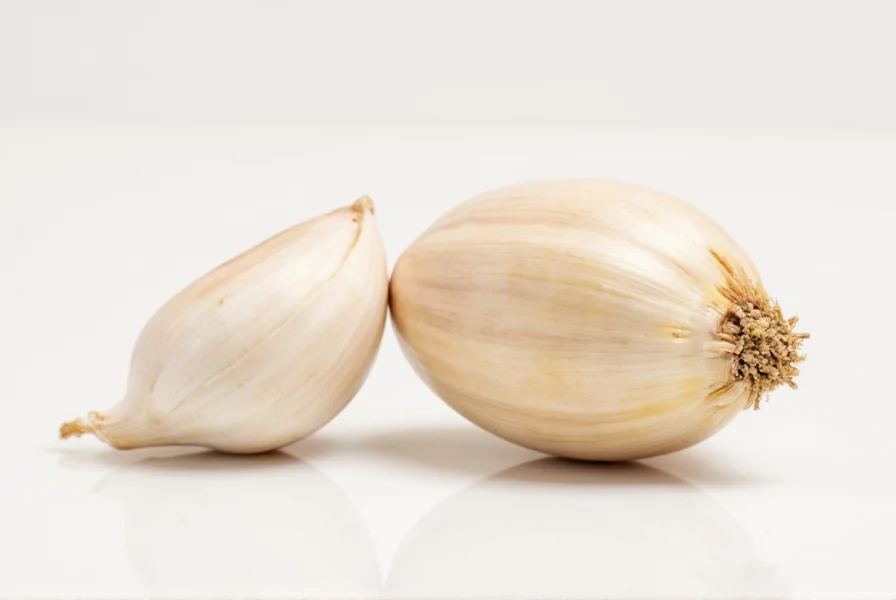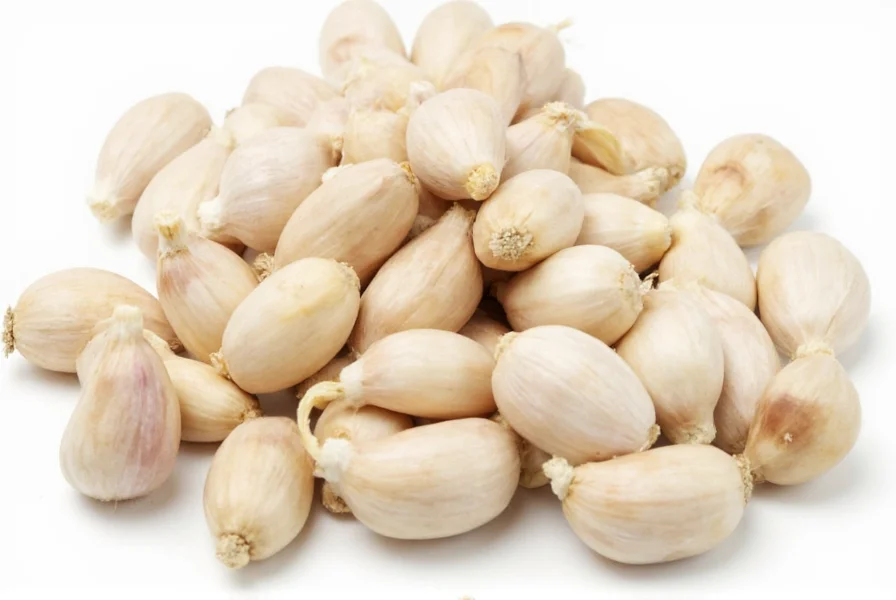A garlic clove is a single segment of a garlic bulb, scientifically known as Allium sativum. Each bulb typically contains 10-20 individual cloves, each wrapped in a papery skin and featuring a pointed tip with a flat root end. This fundamental culinary ingredient delivers garlic's distinctive pungent flavor and aroma when raw, transforming to a sweet, nutty profile when cooked.
Understanding garlic's structure is essential for both novice cooks and experienced chefs. When you purchase what's commonly called a "head of garlic" at the grocery store, you're actually getting a complete bulb composed of multiple individual cloves. These cloves are the edible portions we use in cooking, each functioning as a storage organ for the garlic plant.
Garlic Anatomy: Bulb vs. Clove
Many people confuse garlic bulbs with cloves, but they're distinctly different parts of the same plant:
| Feature | Garlic Bulb | Garlic Clove |
|---|---|---|
| Definition | The entire rounded head of garlic | A single segment within the bulb |
| Structure | Composed of multiple cloves held together by dry outer layers | Individual segment with its own papery skin |
| Typical Count | One complete unit | 10-20 cloves per average bulb |
| Culinary Use | Rarely used whole in cooking | Primary cooking component, used peeled or unpeeled |
Physical Characteristics of Garlic Cloves
Individual garlic cloves have distinctive features that help with identification and selection:
- Shape: Asymmetrical, with one pointed end and one flat end where it attached to the bulb's base
- Size: Varies by garlic variety and bulb position (outer cloves tend to be larger)
- Color: Off-white to pale yellow flesh with translucent papery skin
- Texture: Firm and dense when fresh, becoming spongy when past peak freshness
When selecting garlic cloves for cooking, look for firm, plump segments without soft spots, sprouting, or visible mold. The papery skin should be intact and dry.

Culinary Applications of Garlic Cloves
Chefs value garlic cloves for their versatility in the kitchen. The preparation method significantly impacts the final flavor profile:
- Raw: When used raw and minced, garlic cloves deliver a sharp, pungent heat due to the enzyme alliinase activating when cells are broken
- Roasted: Whole cloves roasted with olive oil become sweet, mellow, and spreadable
- Sautéed: Sliced or minced cloves cooked gently in oil develop a nutty, caramelized flavor
- Preserved: Cloves can be fermented, pickled, or stored in oil for extended use
Professional cooks often adjust the number of cloves based on desired intensity. One standard medium garlic clove typically equals about 1 teaspoon of minced garlic or 1/2 teaspoon of garlic paste.
Storage Techniques for Maximum Freshness
Proper storage preserves garlic cloves' quality and extends their shelf life:
- Store unpeeled cloves in a cool, dark, well-ventilated area (not the refrigerator)
- Keep cloves in a mesh bag or open container to allow air circulation
- Never store garlic in oil at room temperature due to botulism risk
- Peeled cloves can be refrigerated in an airtight container for up to 1 week
- Freeze whole unpeeled cloves for long-term storage (up to 1 year)
Fresh garlic cloves typically remain viable for 3-6 months when stored properly. Signs of spoilage include softness, dark spots, mold, or a sour smell.
Health Considerations and Benefits
Garlic cloves contain allicin, the compound responsible for many of garlic's studied health properties. When crushed or chopped, the enzyme alliinase converts alliin to allicin, which has demonstrated antimicrobial and antioxidant properties in research studies.
While garlic cloves aren't a substitute for medical treatment, incorporating them into a balanced diet may support cardiovascular health and immune function. Consult with a healthcare provider before using garlic therapeutically, especially if taking blood thinners or preparing for surgery.
Common Questions About Garlic Cloves
What's the difference between a garlic clove and a garlic bulb?
A garlic bulb (often called a head of garlic) is the entire rounded cluster you purchase, while a garlic clove is one individual segment within that bulb. A single bulb typically contains 10-20 separate cloves, each wrapped in its own papery skin.
How many teaspoons of minced garlic equals one garlic clove?
One medium garlic clove yields approximately 1 teaspoon of minced garlic. Larger cloves may produce up to 1½ teaspoons, while smaller cloves might yield only ½ teaspoon. For garlic paste, one clove equals about ½ teaspoon.
Can I eat garlic cloves raw?
Yes, you can eat garlic cloves raw, but they have a much stronger, more pungent flavor than cooked garlic. Raw garlic contains higher concentrations of allicin, the compound responsible for many of garlic's studied health properties. Some people experience digestive discomfort when consuming raw garlic, so start with small amounts if you're new to eating it uncooked.
Why do some garlic cloves sprout green shoots?
Garlic cloves sprout green shoots when they're past their prime or stored in warm, humid conditions. The green sprout in the center of the clove is edible but often has a bitter taste. Many chefs recommend removing the green sprout before using older garlic cloves in cooking to prevent bitterness in the final dish.
How should I prepare garlic cloves for cooking?
To prepare garlic cloves, first remove them from the bulb. Place the flat side of a chef's knife over the clove and press down firmly to loosen the skin. Peel away the papery skin, then proceed with your recipe's required preparation method—mincing, slicing, crushing, or leaving whole depending on the dish. For maximum flavor development, allow minced or crushed garlic to rest for 10 minutes before cooking.











 浙公网安备
33010002000092号
浙公网安备
33010002000092号 浙B2-20120091-4
浙B2-20120091-4